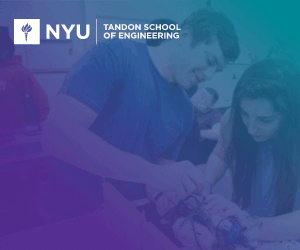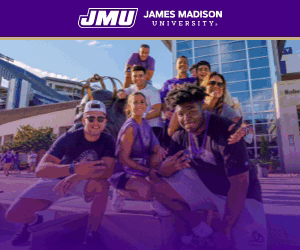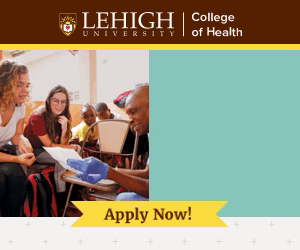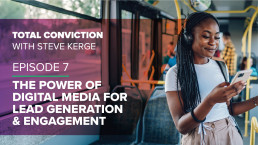The Power of Digital Media for Lead Generation and Engagement
TOTAL CONVICTION: EPISODE 7
The Power of Digital Media for Lead Generation & Engagement
In the latest installment of our video series, “Total Conviction,” Megan Brammer, Senior Client Strategist at Spark451, joins Steve Kerge, Co-founder of Spark451 & Jenzabar Vice President for Enrollment Marketing, to discuss the power of a strong digital media marketing strategy for lead generation and engagement in higher education. Megan highlights two of our partner institutions who have implemented substantial student lead gen digital campaigns as part of their recruitment marketing tactics. Check it out above!
When you’re ready to dive in deeper on how a timely and measurable digital media marketing strategy can support your specific goals, please reach out. Our digital and enrollment marketing experts will be happy to help you develop a budget-friendly plan.
You can also revisit the full collection of “Total Conviction” videos here!
2023 Digital Media Trends for Higher Education
Between the continually evolving digital preferences of college-bound Gen Z students — and the latest waves of targeting challenges resulting from platform evolutions such as the recent iOS14 privacy updates — savvy digital marketers must always keep an eye out for new workarounds and fresh opportunities.
As we fully settle into the first quarter of the new year, now feels like a great time to invest in some digital brainstorming for the months ahead. To help your planning process, here are some of the biggest areas of opportunity we see for higher education marketers in 2023.
The Year of Programmatic
Programmatic advertising is essentially automated media buying that allows you to bid on and buy media placement deals in real-time via an exchange (online marketplace), and serve your ads to specifically targeted audiences using either third-party data from sources like Oracle, Nielsen, and the like, or first-party lists such as your inquiries, parents, or even search vendor lists.
This is the year of programmatic everything, and higher education institutions need to get on the programmatic advertising train, because there’s just too much to lose without utilizing this tactic. With the ongoing fallout from privacy reform on Meta, and other social advertising platforms since the introduction of iOS14’s update, targeting audiences on social sites has become more challenging than ever. For example, when you’re trying to reach students who are under 18, using first– and third-party data targeting on programmatic has been increasingly important to get in front of audiences.



While programmatic display advertising has been popular among select higher ed marketers for a while, another form of programmatic advertising to watch for this year is programmatic audio — the cool new kid on the block for higher education. Gone are the days of buying radio spots on certain stations during specific time blocks, only to hope that your desired audience is tuning in during the times you selected.
Instead, programmatic audio makes it easier to connect directly with the right person at the right time, since it empowers you to target your audience with more specificity than traditional radio. Instead, you target your audience using third-party data and deliver your audio ads on popular streaming platforms such as Spotify, SoundCloud, Audacy, and iHeartRadio, as well as during podcasts and audiobooks. In a nutshell, it makes it easier for your ad to appear within the content that your target audience is already listening to on their apps or desktops.
Stop Advertising, Start “Authenticizing”
To connect with Gen Zers or Millennials on social platforms such as TikTok, Snapchat, or YouTube, it’s important to lead with content that feels authentic — whether it’s paid or organic. Users flock to these platforms in search of quick hits of brief, entertaining, and original content that feels both immediate and a bit raw. In many cases, traditional highly produced ads tend to stick out for all the wrong reasons in these realms. (Don’t worry, those commercial-quality ads are still great for ConnectedTV, but more on that later.)
To make more of an impact on social platforms, rely on user-generated content as much as possible. For example, try utilizing your student ambassadors and tour guides while they’re still around campus, and ask them to record short videos about the places and traditions that make your campus feel special. Or, consider holding a school-spirit creative contest, and have students submit their favorite pictures or video snippets showcasing their favorite activities on campus.
While many institutions are just dipping their toes into the waters of TikTok, it’s important to remember what makes TikTok, Snapchat, and YouTube so popular for our high school and college audiences: the authenticity of the platform. Be sure to channel that authenticity in your media presence across the board.
Netflix and …Ads
While we have been telling our partner schools about the importance of ConnectedTV (CTV) for a couple of years now, many institutions have yet to add this tactic to their multi-channel media strategies. Essentially, CTV gives you the ability to run video ads on streaming devices that are connected to the internet (AppleTV, Roku, FireStick, GoogleTV, etc.). As with programmatic advertising, you no longer have to buy television airtime on a certain channel during a specific timeblock. Instead, you can target your specific desired audience(s) and “follow” their watch habits so that your ads appear with the content they’re already watching. For example, some of the recent CTV campaigns we’ve run for our partner institutions have seen top-tier placements on streaming platforms such as ESPN, Peacock, NBC, Paramount, Fox, Hallmark Channel, and others.
The robust targeting options and the array of third-party data sources available on CTV are what make this tactic so compelling for our partner institutions. Among the thousands of targeting options available within the platform, you’re able to intersect interest segments based on what household viewers are searching for online, their household income brackets, demographics, and level of schooling, all layered in with other aspects of their persona profiles.
"Consumers have been attempting to reduce their subscription count to save money — 25% removed a paid CTV subscription this year and replaced it with a free, ad-supported service."
If you haven’t done so already, now is a great time to start testing the waters with CTV. Last year, Netflix announced they’d be introducing ad-supported tiers, and Disney+ followed suit by the end of 2022. With streaming inventory supply increasing, prices will start lowering as more players enter the space. And, with advertisers spending less on Meta and Google than in years past (in fact, this is the first time since 2014 that Google and Meta have not had over 50% of digital ad market share), streaming platforms have the opportunity to have their moment in the spotlight.
Landing Pages and First-Party List Building
First-party list building (the process of gathering direct inquiries) has been top of mind since iOS14’s release in 2021, due to its widespread impact on digital advertising. As a refresher, iOS14 limited the tracking and attribution of users’ online actions. Ever since, paid media advertisers have been limited in targeting users under the age of 18, which has made it harder to retarget those users from websites and attribute actions they’re taking while using an iOS device. Of course, the paid social campaigns of our higher education partners who recruit this under-18 audience for undergraduate enrollment have been heavily impacted by these changes.
This is where first-party data gathering becomes the hero in this story! With your ability to serve retargeting ads to website users severely compromised, it’s more important than ever to collect direct inquiries early and often. To build your funnel, make sure that your ads drive prospective students to responsive landing pages with short inquiry forms — and use whatever incentives you have at your disposal (fee waivers, downloadable brochures, etc.) to make it as appealing as possible for them to share their information with you. Then, continue to cultivate these students via e-communications throughout the enrollment cycle.
We’re Here for You
While the items we’ve mentioned here are generally high on our radars for 2023, our teams of digital marketing and enrollment strategy specialists are prepared to help you craft a specific plan that will support your goals and help you connect with your desired audiences. When you’re ready to talk, reach out.


